Ardea melanocephala
(Black-headed heron)
Swartkopreier [Afrikaans]; Isikhwalimanzi
, Ukhwalimanzi (terms also applied to Grey heron) [Xhosa]; uNokilonki (also
applied to Grey heron) [Zulu]; Ebo (also applied to Goliath heron) [Kwangali];
Kokolofitoe -hloonto [South Sotho]; Kôkôlôhutwê [Tswana]; Zwartkopreiger
[Dutch]; Héron mélanocéphale [French]; Schwarzkopfreiher [German];
Garça-de-cabeça-preta [Portuguese]
Life
> Eukaryotes >
Opisthokonta
> Metazoa (animals) >
Bilateria >
Deuterostomia > Chordata >
Craniata > Vertebrata (vertebrates) > Gnathostomata (jawed
vertebrates) > Teleostomi (teleost fish) > Osteichthyes (bony fish) > Class:
Sarcopterygii (lobe-finned
fish) > Stegocephalia (terrestrial
vertebrates) > Tetrapoda
(four-legged vertebrates) > Reptiliomorpha > Amniota >
Reptilia (reptiles) >
Romeriida > Diapsida > Archosauromorpha > Archosauria >
Dinosauria
(dinosaurs) > Saurischia > Theropoda (bipedal predatory dinosaurs) >
Coelurosauria > Maniraptora > Aves
(birds) > Order: Ciconiiformes
> Family: Ardeidae
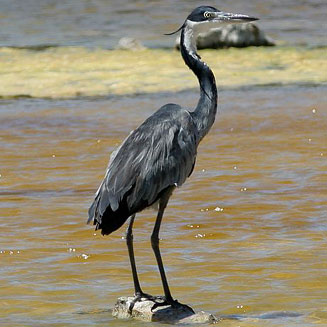 |
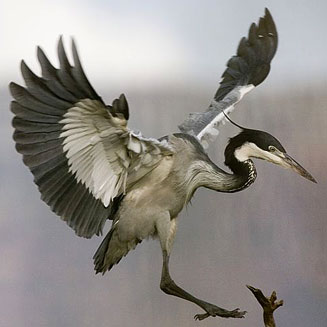 |
| Black-headed heron, West
Coast National Park, South Africa. [photo
Trevor Hardaker ©] |
Black-headed heron, Rondevlei Nature
Reserve, South Africa. [photo Trevor Hardaker ©] |
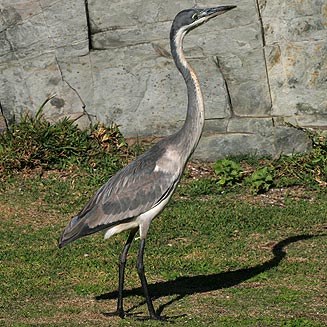 |
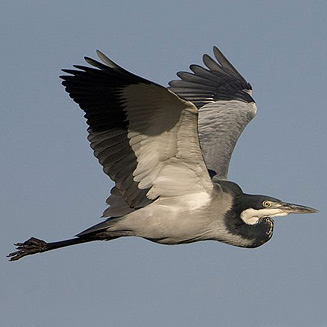 |
| Black-headed heron
juvenile, Tsitsikamma National Park, Western Cape, South Africa. [photo Duncan Robertson ©] |
Black-headed heron, Strandfontein
Sewerage Works, Western Cape, South Africa. [photo Trevor Hardaker ©] |
Distribution and habitat
Occurs across sub-Saharan Africa, from Senegal to Ethiopia
south to southern Africa, where it is common in Zimbabwe and South Africa while
more scarce in Namibia, Botswana and Mozambique. It generally favours open
grassy habitats, sometimes moving into marshes and
floodplains in southern Mozambique.
|
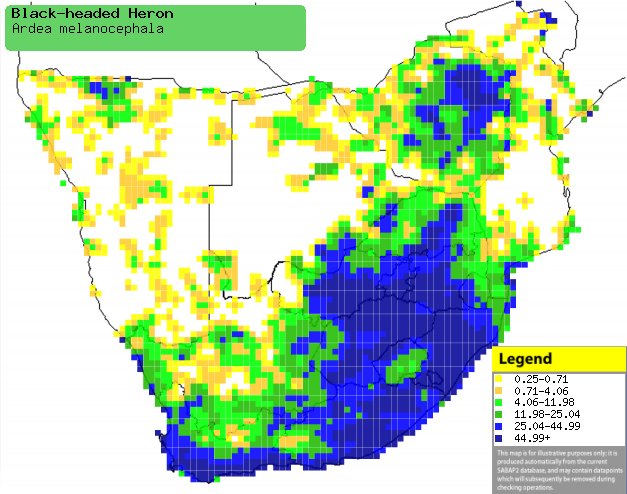 |
|
Distribution of Black-headed heron in southern Africa,
based on statistical smoothing of the records from first SA Bird Atlas
Project (©
Animal Demography unit, University of
Cape Town; smoothing by Birgit Erni and Francesca Little). Colours range
from dark blue (most common) through to yellow (least common).
See here for the latest distribution
from the SABAP2. |
Predators and parasites
- Predators of eggs and nestlings
Movements and migrations
Resident and sometimes nomadic, moving in
response to food availability.
Food
It mainly eats terrestrial insects, supplemented with small
mammals, reptiles and birds, doing most of its foraging solitarily. It hunts by
slowly and purposefully moving through the grass, rocking its head from side to
side; when it spots prey, it freezes and then strikes with its bill. The following food items have been recorded
in its diet:
- Invertebrates
- Vertebrates
- reptiles
- small mammals
- frogs
- Afrana angolensis (River frog)
- birds up to the size of
Philomachus
pugnax (Ruff)
Breeding
- Monogamous and usually colonial, breeding in small, mixed-species
heronries. The male calls from a perch to attract a mate, raising its head
and giving a loud yelp, sometimes extending its bill vertically as it does
so.
- The nest is mainly built by the female with material provided by the
male, consisting of an untidy platform of twigs, lined with leaves and other
soft material. It is typically placed in the canopy of a tree or in a
reedbed, rarely on a cliff ledge or the ground of a small island.
- Egg-laying season is year-round, peaking during the wettest months of
the year.
- It lays 2-4 eggs, which are incubated by both sexes for about 23-27
days.
- The chicks development is not well-known, other than that they leave the
nest at about 52 days old, becoming fully independent roughly a week later.
Threats
Not threatened, in fact it has benefited from habitat
disturbance and agriculture.
References
-
Hockey PAR, Dean WRJ and Ryan PG 2005. Roberts
- Birds of southern Africa, VIIth ed. The Trustees of the John Voelcker
Bird Book Fund, Cape Town.
|
